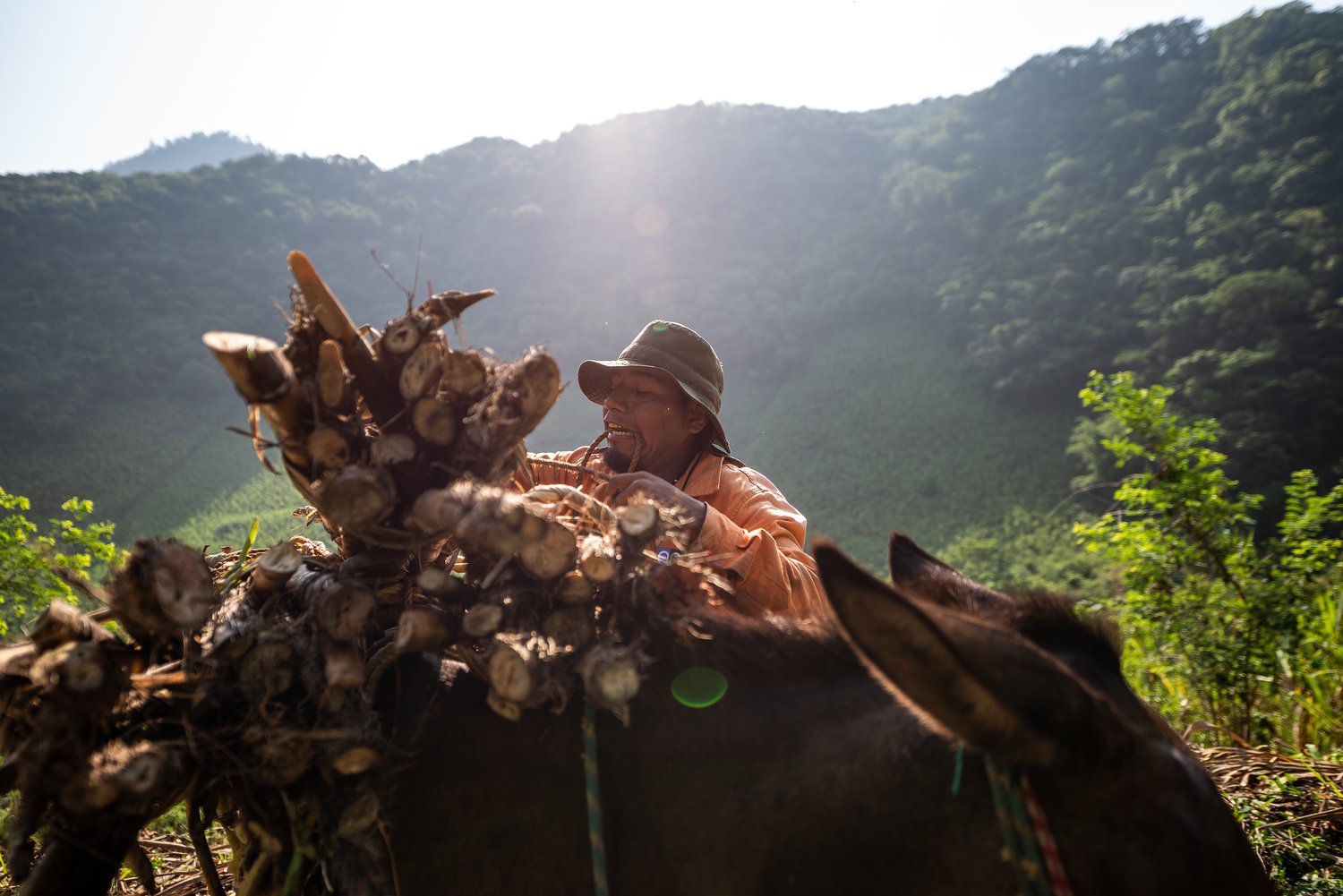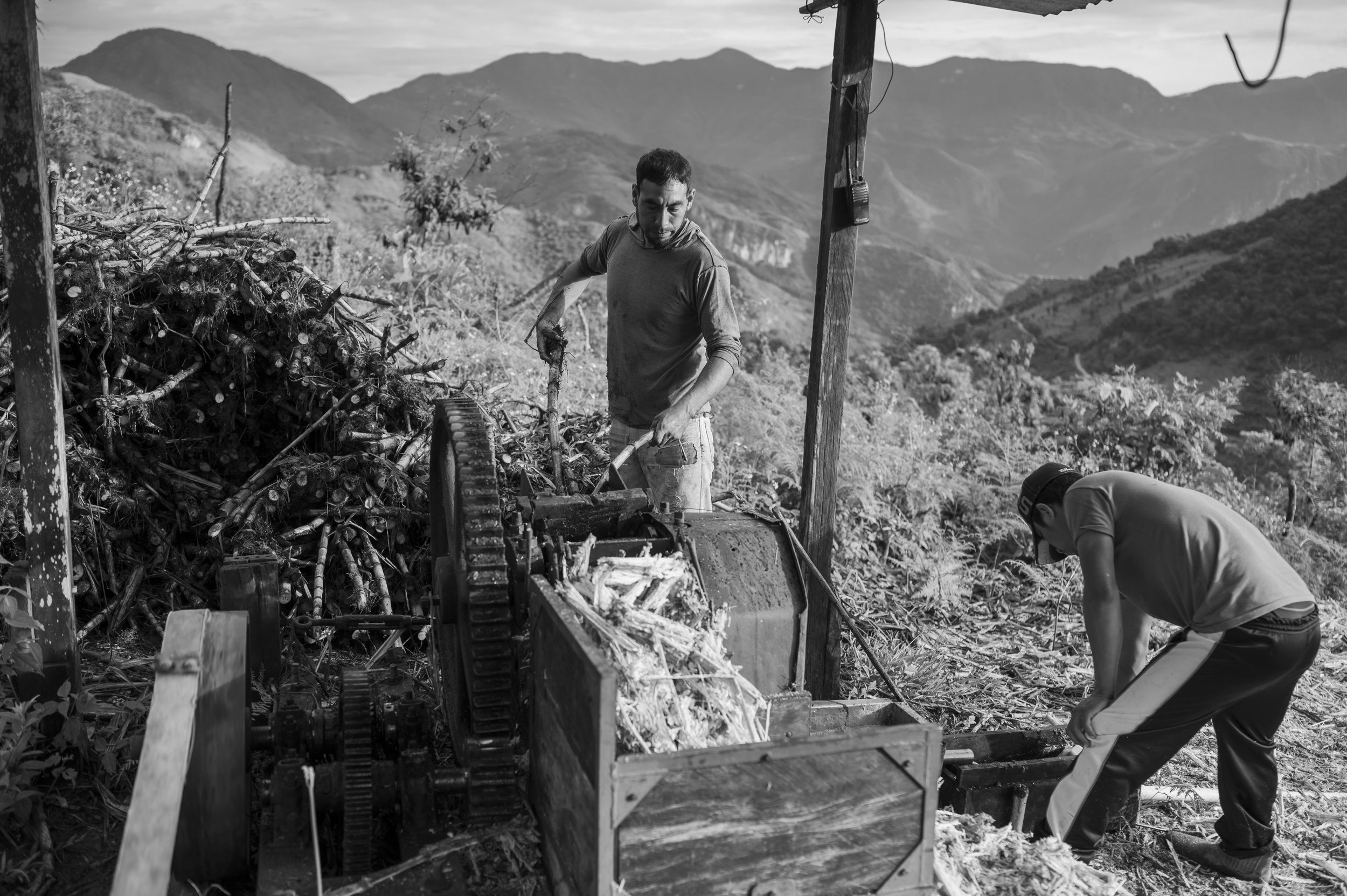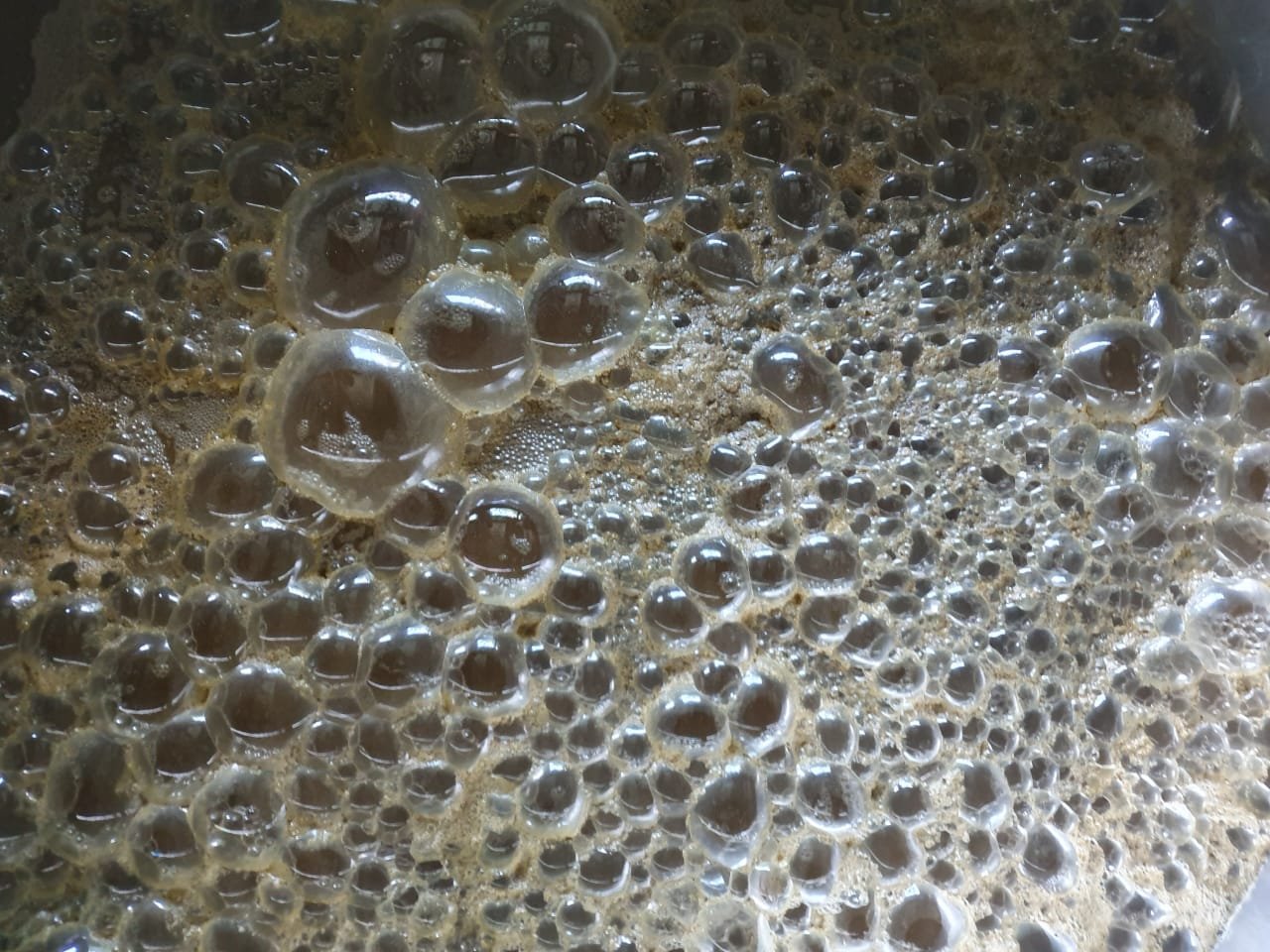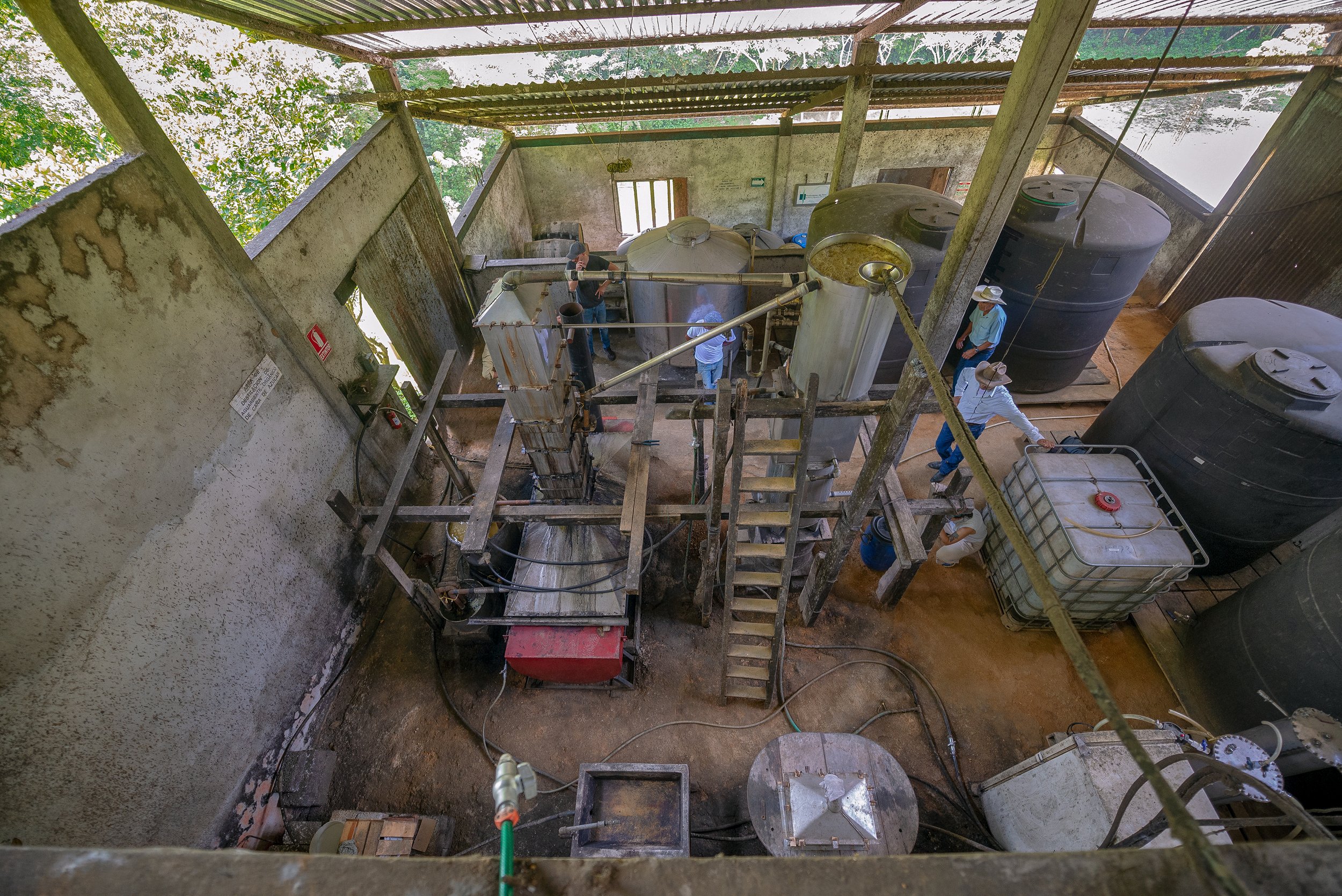
Harvest
Organic sugarcane is hand-harvested from the laderas (hillsides) above the palenque (distillery), from altitudes that range from 700 to 1200 meters (2,300 - 3,900 feet) above sea level. The harvested cane is transported by horse, donkey or mule to the trapiche to be milled that day.
Batches distilled from low-altitude cane are harvested between 700 and 900 meters. Batches distilled from cane higher than 900 meters are from lower-yielding cane. Check your batch number: CA (Caña Alta) batches are from 900m - 1200m altitude, batches CB (Caña Baja) batches are from 700 - 900 meters above sea level.

Milling
Once a mound of cane (approximately 10 tons) is transported to the trapiche, the master distillers begin extracting the juice from the cane with a Campollo 9” mill. The juice is then filtered and, by the force of gravity, transported in a system of hoses that can be up to 2 km long before reaching the distillery. The Krassel family moves the trapiche from location to location based on the season.

Fermentation
Once the fresh-squeezed cane juice arrives at the distillery, it is diverted to seven 1,200-liter stainless steel fermenting tanks that are stored outside of the distillery. The juice begins to ferment on its own, thanks to the presence of an abundance of wild yeasts that start and maintain the fermentation. Depending on the climate, yeasts, and sugar content of the cane juice, fermentation will last between six and ten days.

Distillation
Here is where the Krassel family best demonstrates the mastery of their craft. The family uses an unusual still that their grandfather Max invented in the 1930s. This still improved upon the design and efficiency of the six-plate “Destilador inglés” batch stills that were and continue to be commonly used in most of Mexico;s aguardiente-producing regions.
The “Krassel Still” invented by Max is considered a continuous still. It houses eight plates in the distillation column, produces no heads or tails, and the distillation ABV is regulated by the temperature of the cooling chambers and the flow of the fresh caña juice to the boiling chamber. It is an engineering marvel that needs to be seen to fully comprehend.
Unlike the majority of Oaxacan aguardiente producers, the Krassel Family fires their still with diesel, rather than use the much more common method of powering their still with firewood. They believe this to be the best way to protect regional forests, which are increasingly threatened by deforestation.
Sign up for the latest dispatches
Sign up with your email address to receive news and updates.




